Through this integrated entity, HD HHI plans to expand its opportunities in the growing icebreaker market, aligning with the increasing focus on Arctic sovereignty. This strategic move combines HD HHI's icebreaker construction technology with HD HMD's production capabilities. Two of HD HMD's four docks will be dedicated to building special purpose vessels, including icebreakers, and defense products like warships.
In 2011, HD HHI successfully completed the final hull performance verification for a 190,000-ton ice-breaking merchant vessel at the Canadian IOT Research Centre's ice tank.
The vessel developed by HD HHI at the time was the world's largest ice-breaking merchant vessel, designed to break through 1.7-meter-thick Canadian sea ice in the most extreme Arctic regions and operate at a speed of 11 kilometers per hour. However, the project did not proceed to actual construction.
HD HHI intends to transfer this advanced technology to HD HMD. By building icebreakers at HD HMD's docks, which specialize in medium-sized vessel construction, the company aims to achieve 1 trillion Korean Won (approximately USD 720 million) in sales from special purpose vessels alone by 2035.
During a recent conference call, an HD HHI official stated, "The rapidly growing special purpose vessel market, including icebreakers, primarily evaluates a shipyard's construction track record as a key factor during ordering."
The official further explained, "By integrating the special purpose vessel construction track records of HD HHI and HD HMD, we will expand our entry opportunities into the fast-growing icebreaker market and other special purpose vessel markets, such as those for offshore wind turbine installation vessels (WITV), maximizing our market share." It was also emphasized that research and development capabilities are considered part of the track record.
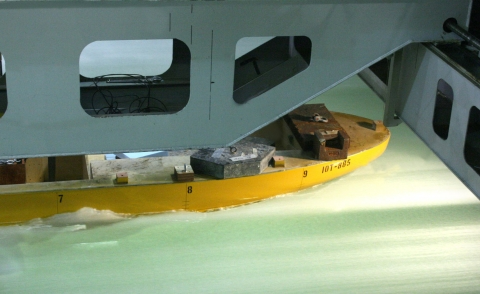
A scene from HD Hyundai Heavy Industries' final performance test of an ice-breaking merchant vessel's hull form, conducted in August 2011 at the ice tank of the Canadian IOT Research Centre. /Photo courtesy of HD Hyundai Heavy Industries
Domestically, Hanwha Ocean and Samsung Heavy Industries have prior experience in building icebreakers. Hanwha Ocean holds the record for constructing the highest number of ice-breaking liquefied natural gas (LNG) carriers worldwide. In July, it was also selected as the preferred bidder for the Ministry of Oceans and Fisheries' next-generation ice-breaking research vessel construction project.
Samsung Heavy Industries secured its first order for a bi-directional icebreaker in 2005. From 2020 to 2021, SHI received orders for 10 ice-breaking LNG carriers from Russia's Zvezda. However, due to the prolonged Russia-Ukraine war, Zvezda notified SHI of contract termination, and SHI is currently pursuing a lawsuit for damages.
The icebreaker market is showing a strong growth trend. According to market research firm Business Research Insights, the global icebreaker market is projected to grow from USD 1.9 billion in 2025 to USD 3.1 billion by 2034.
Demand for icebreakers is also increasing in the United States, driven by the Trump administration's Alaska LNG development project and the opening of the Arctic Sea route.
According to a report titled "Analysis of U.S. Shipbuilding Industry and Implications for Korea-U.S. Cooperation" by Professor Ryu Min-chul of Korea Maritime & Ocean University, 10 icebreakers are expected to be ordered in the potential U.S. newbuild market by 2037.
Professor Ryu explained, "If shipping between Europe and the U.S. West Coast via the Arctic Sea route increases, there is a possibility of additional orders for icebreakers and ice-strengthened merchant vessels."
Shin Haeju (hjs0509@fntimes.com)











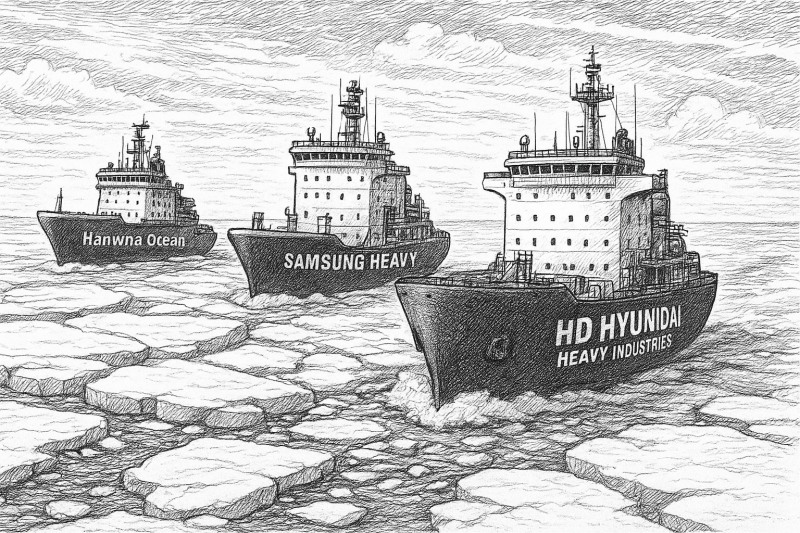
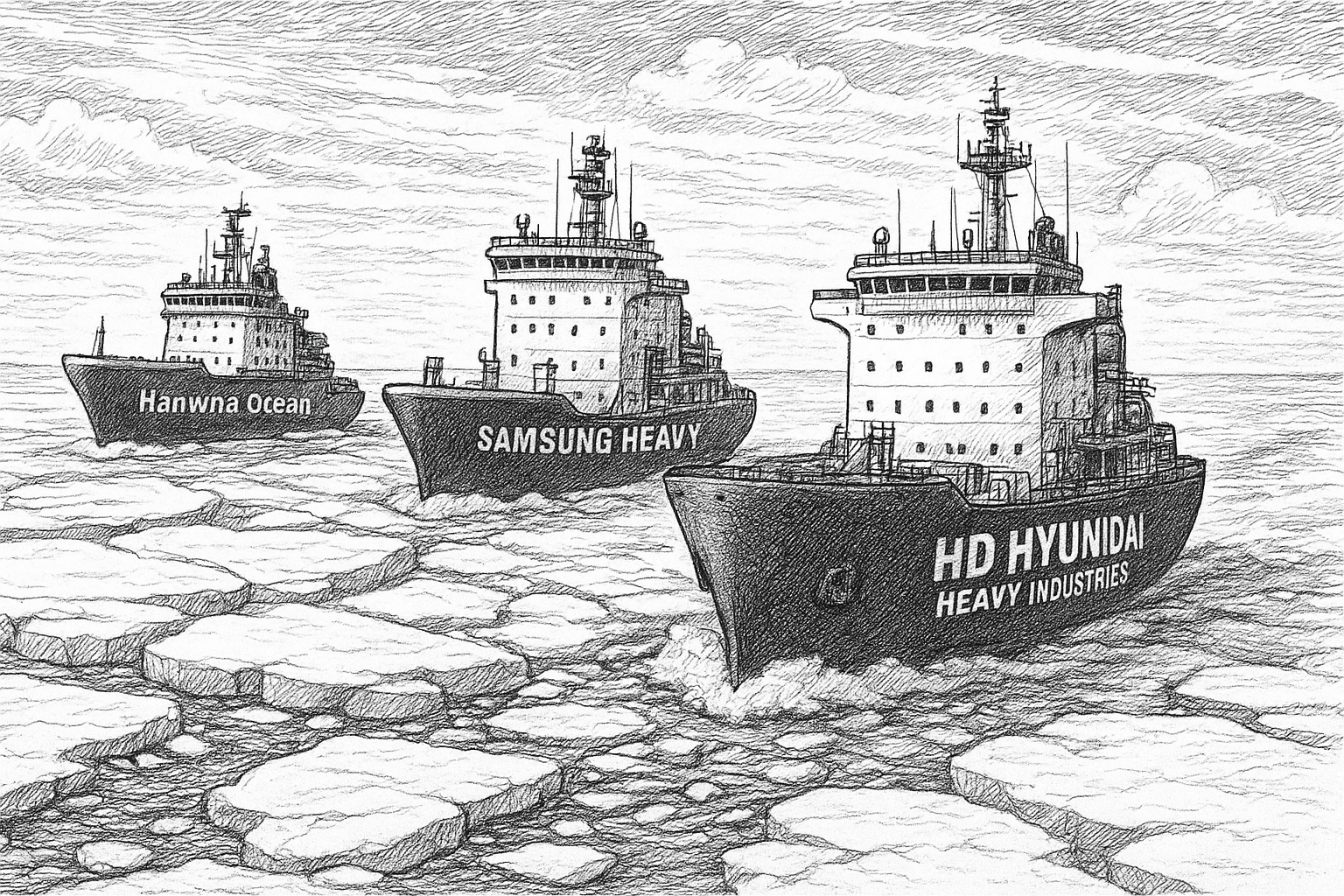
















![[프로필] 이완진 농협생명 신임 부사장, 보험 자산운용·투자전략 전문가인 '생명맨'](https://cfnimage.commutil.kr/phpwas/restmb_setimgmake.php?pp=006&w=69&h=45&m=5&simg=20251204201543076308a55064dd1211217107175.jpg&nmt=18)
![윤건수 DSC인베 대표, 관리보수 116억원 유입…세컨더리 투자 투트랙 전략 [금융권 2025 3분기 실적]](https://cfnimage.commutil.kr/phpwas/restmb_setimgmake.php?pp=006&w=69&h=45&m=5&simg=2025061403084000104dd55077bc212411124362.jpg&nmt=18)
![[프로필] 서성현 농협손보 신임 부사장, 리스크 관리·투자 운용 전문가](https://cfnimage.commutil.kr/phpwas/restmb_setimgmake.php?pp=006&w=69&h=45&m=5&simg=20251205102012020079efc5ce4ae1439255137.jpg&nmt=18)
![12개월 최고 연 3.25%…SC제일은행 'e-그린세이브예금' [이주의 은행 예금금리-12월 2주]](https://cfnimage.commutil.kr/phpwas/restmb_setimgmake.php?pp=006&w=69&h=45&m=5&simg=2025121210470000235300bf52dd2121131180157.jpg&nmt=18)

![[프로필] 이은배 하나에프앤아이 대표이사 후보자, 영업 경험 풍부한 현장 영업 전문가](https://cfnimage.commutil.kr/phpwas/restmb_setimgmake.php?pp=006&w=69&h=45&m=5&simg=20251210235618012466a663fbf34175192139202.jpg&nmt=18)










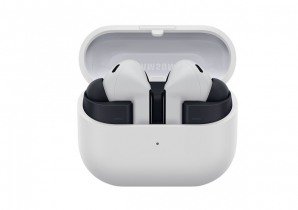


![[카드뉴스] KT&G, 제조 부문 명장 선발, 기술 리더 중심 본원적 경쟁력 강화](https://cfnimage.commutil.kr/phpwas/restmb_setimgmake.php?pp=006&w=298&h=298&m=1&simg=202509241142445913de68fcbb3512411124362_0.png&nmt=18)
![[카드뉴스] KT&G ‘Global Jr. Committee’, 조직문화 혁신 방안 제언](https://cfnimage.commutil.kr/phpwas/restmb_setimgmake.php?pp=006&w=298&h=298&m=1&simg=202503261121571288de68fcbb3512411124362_0.png&nmt=18)
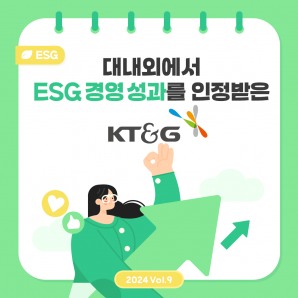

![[카드뉴스] 국립생태원과 함께 환경보호 활동 강화하는 KT&G](https://cfnimage.commutil.kr/phpwas/restmb_setimgmake.php?pp=006&w=298&h=298&m=1&simg=202403221529138957c1c16452b0175114235199_0.png&nmt=18)
![[신간] 고수의 M&A 바이블](https://cfnimage.commutil.kr/phpwas/restmb_setimgmake.php?pp=006&w=81&h=123&m=5&simg=2025091008414900330f8caa4a5ce12411124362.jpg&nmt=18)
![[신간] 리빌딩 코리아 - 피크 코리아 극복을 위한 생산성 주도 성장 전략](https://cfnimage.commutil.kr/phpwas/restmb_setimgmake.php?pp=006&w=81&h=123&m=5&simg=2025032814555807705f8caa4a5ce12411124362.jpg&nmt=18)
![[서평] 추세 매매의 대가들...추세추종 투자전략의 대가 14인 인터뷰](https://cfnimage.commutil.kr/phpwas/restmb_setimgmake.php?pp=006&w=81&h=123&m=5&simg=2023102410444004986c1c16452b0175114235199.jpg&nmt=18)

![[신간] 조금 느려도 괜찮아...느림 속에서 발견한 마음의 빛깔](https://cfnimage.commutil.kr/phpwas/restmb_setimgmake.php?pp=006&w=81&h=123&m=5&simg=20251105082239062852a735e27af12411124362.jpg&nmt=18)

![[AD] 기아 ‘PV5’, 최대 적재중량 1회 충전 693km 주행 기네스 신기록](https://cfnimage.commutil.kr/phpwas/restmb_setimgmake.php?pp=006&w=89&h=45&m=1&simg=20251105115215067287492587736121125197123.jpg&nmt=18)
![[카드뉴스] KT&G, 제조 부문 명장 선발, 기술 리더 중심 본원적 경쟁력 강화](https://cfnimage.commutil.kr/phpwas/restmb_setimgmake.php?pp=006&w=89&h=45&m=1&simg=202509241142445913de68fcbb3512411124362_0.png&nmt=18)
![[AD]‘황금연휴에 즐기세요’ 기아, ‘미리 추석 페스타’ 이벤트 실시](https://cfnimage.commutil.kr/phpwas/restmb_setimgmake.php?pp=006&w=89&h=45&m=1&simg=20250903093618029117492587736121166140186.jpg&nmt=18)
![[AD]‘패밀리카 선두 주자’ 기아, ‘The 2026 카니발’ 출시](https://cfnimage.commutil.kr/phpwas/restmb_setimgmake.php?pp=006&w=89&h=45&m=1&simg=2025081810452407346749258773621116810840.jpg&nmt=18)
![[AD] ‘상품성↑가격↓’ 현대차, 2025년형 ‘아이오닉 5’·‘코나 일렉트릭’ 출시](https://cfnimage.commutil.kr/phpwas/restmb_setimgmake.php?pp=006&w=89&h=45&m=1&simg=202505131018360969274925877362115218260.jpg&nmt=18)



